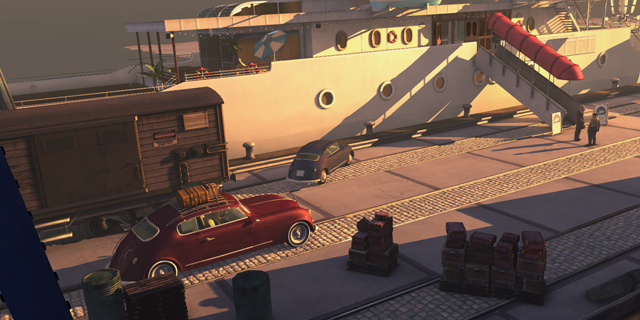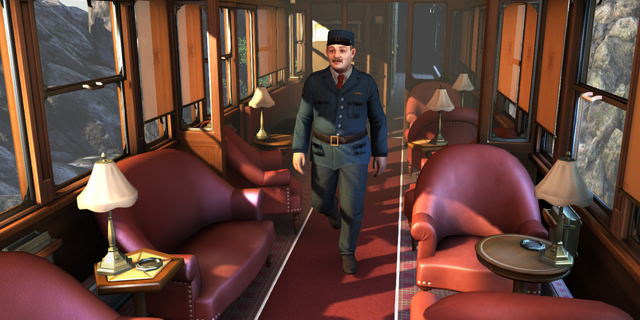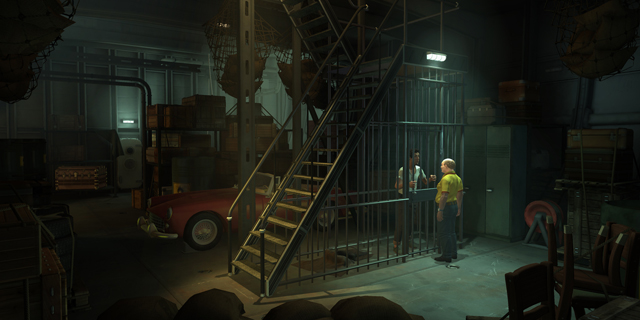
The Raven: Legacy of a Master Thief is as much an interactive detective mystery as it is a point-and-click adventure game. Pairing an interactive crime story like this with an adventure game used to be common, and The Raven does it well enough to show why.
The titular Raven was a brazen gentlemanly thief who struck all across Europe, pulling off a number of major heists before being shot and killed by Inspector LeGrand. Now, four years later, a new successor to the Raven has arisen, though his methods are more violent. After he steals a massive ruby known as the Eye of the Sphinx from London in the opening, we meet our hero, Constable Zellner: a rather portly older Swiss policeman, escorting the other Eye, an equally massive emerald, from Zurich to Cairo where it will be displayed in the museum.
Zellner isn’t your usual protagonist, but his grandfatherly feel makes others comfortable talking to him, and his observational skills and logic are up to the task. He’s a welcome change from the usual, and the way he interacts with others, from children to nobility to other policemen, is enjoyable enough to excuse the fact that his jokes rarely land. That’s just another aspect of his charm.

The story wouldn’t feel out of place in an Agatha Christie novel, and the leisurely pace of the game allows you to take in the vibrant art style and fittingly-European voice acting. The aesthetic is very reminiscent of the Tintin movie, detailed and expressive despite some aspects looking a little abnormal.
The Raven takes a very cinematic style throughout, which definitely helps with the story, though it sometimes means that the adventure game features take a backseat. This is actually a good way to describe The Raven as a whole. The visual novel style works very well, while the puzzles suffer somewhat from a lack of information or explanation.
There is a hint system that allows you to pay points, which are earned by finding clues and solving puzzles, to get hints and tips about what to do next. The tip function highlights anything on the current screen that can be interacted with, while the hints give a vague bit of information on where to find the solution, or part of it, for a puzzle. More games need to implement something like this, though hopefully more skillfully. It isn’t very helpful here, sadly, because the hints are extremely vague. The puzzles themselves are generally informational or logical in nature, but the game is very finicky about how to go about combining items for solutions. If you don’t combine them in the correct order, it simply doesn’t accept the combination, so you’ll sometimes find yourself running through variants just to solve a puzzle you already know the answer to.

The Eye of the Sphinx is the first chapter in a three-part episodic series, and it’s a start that makes us excited to see the rest of the story. If the puzzles in Ancestry of Lies and A Murder of Ravens can catch up to the rest of the game in quality, It will be an excellent experience.
Pros: Art style is expressive, Constable Zellner is an unusual and welcome protagonist
Cons: Puzzle-solving is unwieldy, hints are often too vague



















